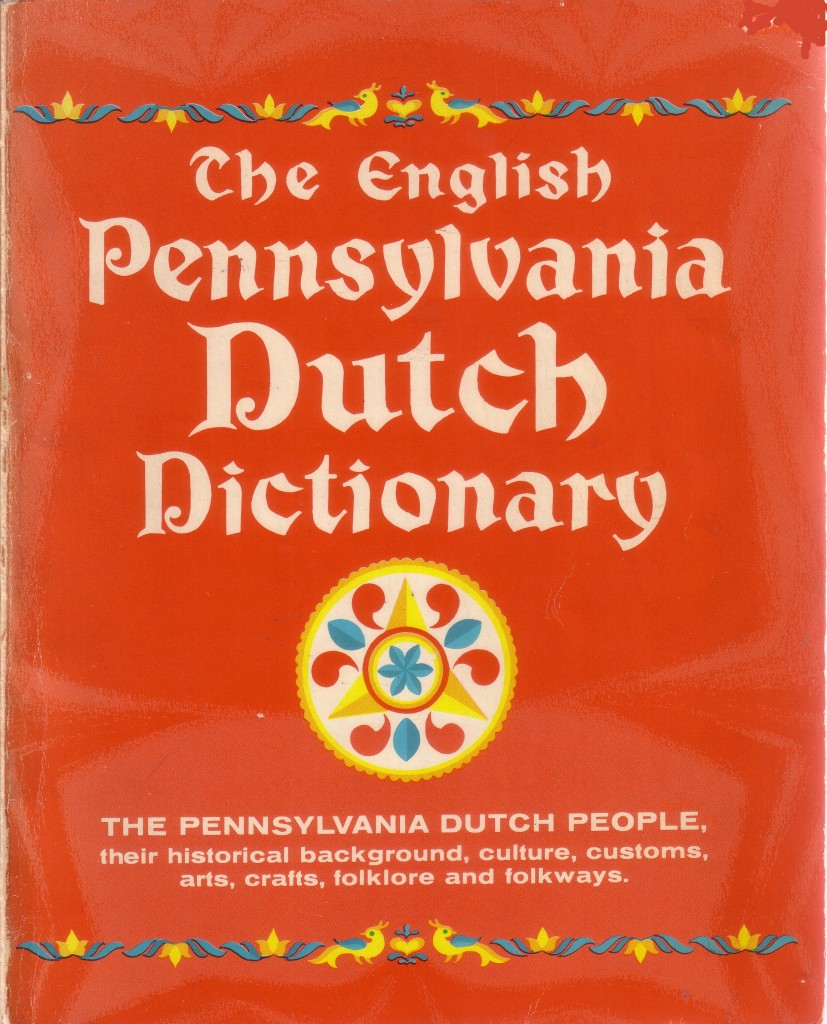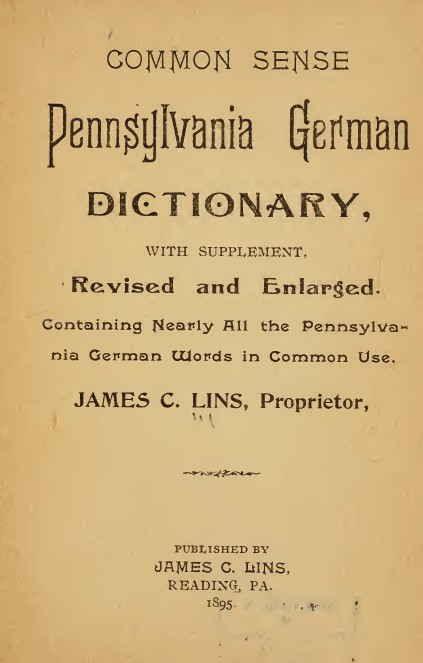Pennsylvania Dutch & the Civil War – Background & Family
Posted By Norman Gasbarro on December 12, 2010
In the early 18th century, large numbers of Germans from the Palatinate region in Germany emigrated to American and settled in the fertile valleys of Pennsylvania. Within a short time these early pioneers found their way to the area around the Susquehanna River that is now called the Lykens Valley. The Pennsylvania Deutsch, as they referred to themselves, were soon called the Pennsylvania Dutch by their fellow settlers – mistaking the German accented-pronunciation of the German word for “German” for a word representing a people of a quite different background and culture.
For generations following the initial migration, the Pennsylvania Dutch retained much of their heritage and ways, adapting to the new land, and creating an original dialect of German that was spoken as the primary language of the home and workplace well into the early 20th century. Despite the efforts of universal public education (which was most always in English), the language survived and is still spoken today by some “old folks” who grew up with it and pride themselves in being bi-lingual. But, in another generation or two, Pennsylvania Dutch will most likely completely disappear with few left who can speak it and its only “study” being in universities committed to the memorializing of dead languages.
In the Civil War period, it can be assumed that many of the American-born descendants of the early German immigrants learned Pennsylvania Dutch before they learned English. Their mothers and grandmothers spoke “Dutch” fluently and in many cases knew very little English. Women rarely went to school or learned how to read and write. Some boys went to school, but not all. Those who did go to school, learned how to speak, read, and write in English – but they retained their Pennsylvania Dutch because it was necessary for family, religion and commerce. It must be believed that every Civil War veteran with a surname of German origin was bilingual – and many knew Pennsylvania Dutch better than English.
Fortunately, there are dictionaries available so we can look at some of the words and terms that may have been used in the Civil War period. One of my personal favorites is The English Pennsylvania Dutch Dictionary and the Pennsylvania Dutch People which includes English “equivalents” by Howard Snader. The “equivalents” are Snader’s suggested ways of pronouncing the words – but, to do it right, a German accent must be used – applied with with a brightness that only a true Pennsylvania Dutchman can muster!
Over a series of posts, I will attempt to set out some of these words – in groups – as they relate to various aspects of Pennsylvania Dutch life. The first group of words are those that describe family, people and relationships. They are the important words that the genealogist needs to know.
Ancestors (FOR gong es leit); bad blood (schlecht BLUDT); birthday (ge BUDS dog); boy (boo); brother (BROOD er); brother-in-law (SCHWAYG er); brothers (BREE der); child (kindt); children (KINN er); companion (KOOM rawd); courting (SCHPAR ig a); daughter (DOCHT er); daughter-in-law (SCHWARR docht er); daughters (DECHT er); family (fa MIL ia); father (FODD er); father-in-law (SCHWARR dawd y); first born (AIRSCHT ge bo ra); flesh and blood (flaysch un bludt); foreigner (OWS lonn er); girl (MAYD el); grandchild (KINS kindt); granddaughter (GROSS docht er); grandfather (gross FADD er); grandmother (gross MUTT er); grandson (GROSS sooh); great aunt (GROWS ant i); half brother (HOLB brooder); half sister (holb SCHWESCHT er); husband (mon); illegitimate (kindt LEDD ich a wise); infant (BUBB el); kith and kin (freynd un FREYND schaft); lady (frau); maiden name (LEDD ich er naw ma); mamma (MOMM ie); man (MONS karl); marriage (HOCH tzich); matron (frau); men (MONS leit); mistress (HOWS frau); mother (MUTT er); mother-in-law (SCHWARR mutt er); nephew (g’SCHWISCHD er soo); niece (g’SCHWISCHD); old (alt); old age (ALT a yahr a); older (ELD er); oldest (eldscht); parents (ELD ra); people (MENSCH a); pregnant (MITT kint, UFF ga BINDL’D); relatives (FREYND schaft); school boy (SCHULE boo); school girl (SCHULE MAYD el); sister (SCHWESCHT er); step brother (SCHTIEF BROOD er); step child (SCHTIEF kindt); step daughter ( SCHTIEF DOCHT er); step father (SCHTIEF DAW dy); step mother (SCHTIEF MOMM ie); step parent (SCHTIEF ELD er); step son (SCHTIEF soohn); twins (TZWILL ing); widow (WID frau); widower (WID mon); wife (frau); wives (WI wer); woman (WEIBS mensch); the young (de YUNG a); youngster (YUNG es, SCHPRING er).
A few words are noticeably missing, They did not appear in the above-mentioned dictionary: cousin, uncle, great uncle. Perhaps someone can supply the Pennsylvania Dutch words or “equivalents.”.
For those who wish to study the language further, an excellent dictionary of Pennsylvania German to English, Common Sense Pennsylvania German Dictionary, published by James C. Lins in Reading, Pennylvania, in 1895. It’s a free download and a great resource. Note though that there is no pronunciation guide and the German word must be looked up to find its English meaning.
Future posts will discuss Pennsylvania Dutch words used to describe 19th century occupations and vocations; religion, life and death, and the afterlife; illnesses, maladies, diseases, and medicines; and the vocabulary of war.
 ;
;




Comments